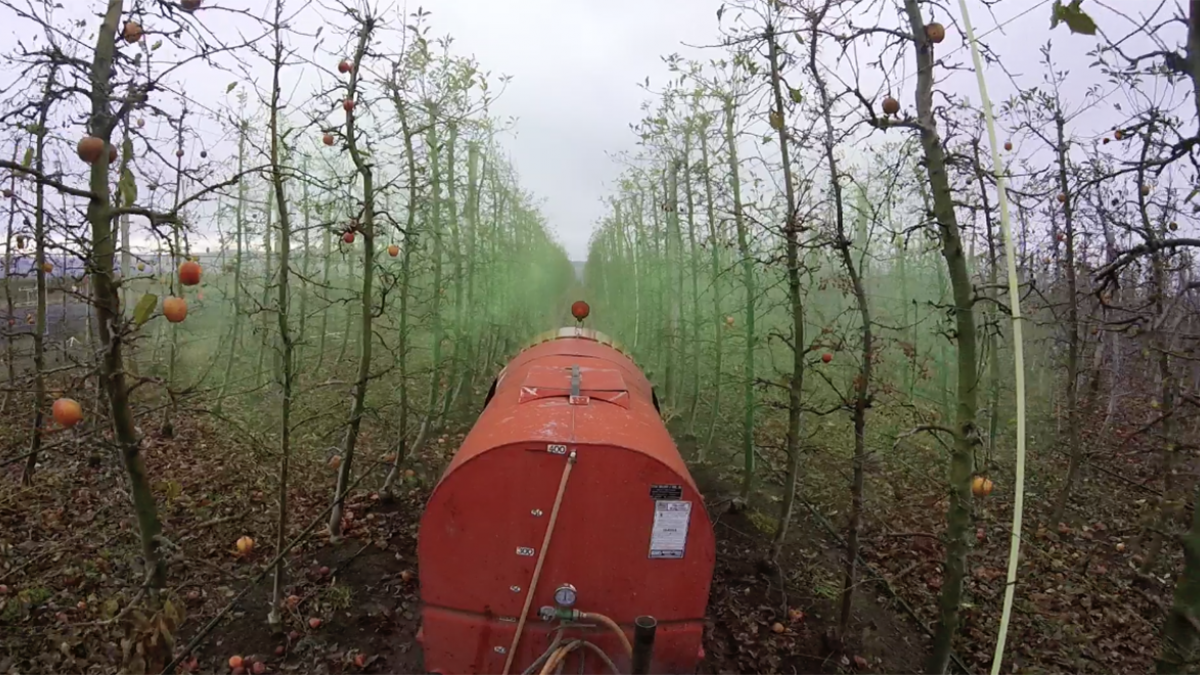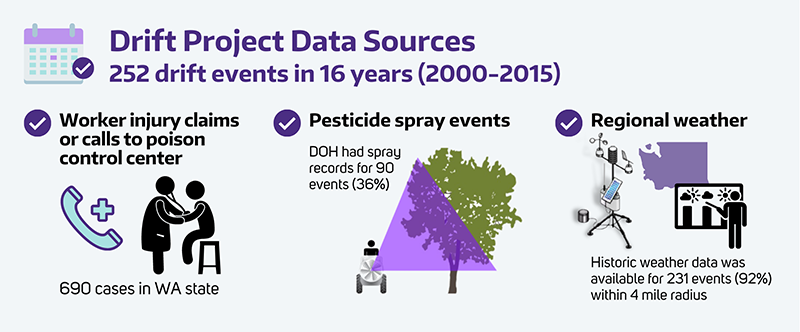

A new paper by Edward Kasner and colleagues examines how weather, specifically the wind, contributes to pesticide drift exposure and human illness in the Washington state agricultural industry. This is a new approach to the study of pesticide drift, taking a closer look at historical data, linking weather data and pesticide drift illness cases over multiple years. Results from the study provide information about drift events in terms of time, space, and wind variability. Kasner anticipates that these findings can be incorporated into new training materials to improve the practice of pesticide application and better documentation of spray drift events.
Seasonal changes
The drift-prone period of March–July, which increases demands on state agencies, is an appropriate time to boost capacity for preventing and tracking incidents. Resources should focus on those counties with the highest number of drift events. Messages should be delivered to managers, crew supervisors, and workers shortly before the drift-prone period that begins in March, including tips about best practices for pesticide application and exposure prevention.
New directions
The paper recommends that pesticide applicators continue to be given clear instructions and standardized methods to record the time and place of spray events. Additional recommendations include a pilot program to evaluate the most practical means of providing pesticide applicators with real-time weather data. Technological solutions can simplify the task of forecasting and tracking site-specific weather conditions for precise spraying. The National Academy of Sciences defines precision agriculture as, “a management strategy that uses information technologies to bring data from multiple sources to bear on decisions associated with crop production.” The authors hope this study will be helpful to stakeholders in the agricultural industry as it describes ways to provide actionable information about drift events.



